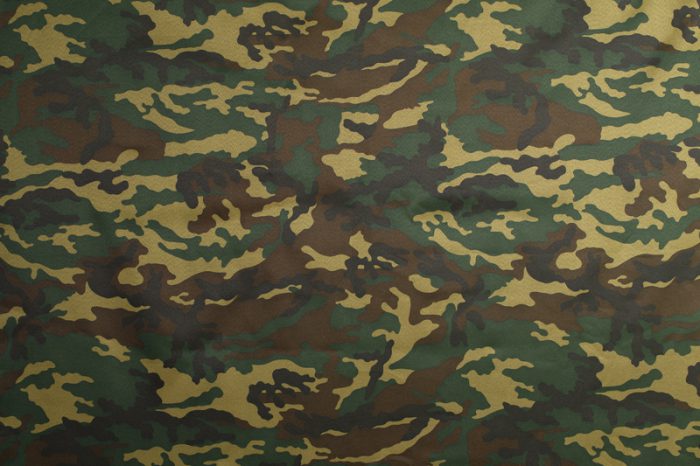Imagine a soldier stands in a forest. Her green and brown camouflage blends perfectly with the wood and pine needles behind her. Then she moves in front of a large snow bank ... and the camouflage changes to become lighter!
Meanwhile, another soldier accidentally tore his jacket sleeve open yesterday climbing down a rough rock face. It used to be an inch-wide hole. But now, that hole is fully closed, all on its own!
Does this stuff—adaptive camouflage and self-repairing clothing—sound like science fiction? Maybe it is right now. But Canada's Department of National Defense (DND) is working hard on making it a reality.
They've just announced that they're spending $9 million on research into these technologies, as well as lighter, stronger body armour and more comfortable uniforms. And the result could be pretty mindblowing.
Top secret
The famously adaptable skin of the chameleon is one of nature's great miracles. What if clothing could imitate its powers? (Getty Embed)
The technology is so top secret that there are no photos, no press releases. But according to Eric Fournier, the director general of innovation for the DND, this kind of technology exists. And five of the country's top universities are leading the charge researching this stuff.
Those universities are Carleton University, Polytechnique Montreal, the University of Manitoba, the University of British Columbia, and Université de Sherbrooke. Each school is heading up a different type of tech. When put together around five years from now, it could add up to some of the most modern military uniforms in the world.
Seals itself
Though the tech is very secretive, rumours are that the self-repairing fabric would work something like this. Small capsules would be embedded—or placed within—the fabrics. When the fabric was torn, it would release a foam liquid that would immediately begin solidiying and sealing the hole. Incredible!
As for the other tech, such as the lighter body armour, it's easy to see why it would be appealing. The average weight of a soldier's armour is around 30 kg (65 lbs.). That's like carrying a small child around all the time. Sure, it could save your life, but it's also an incredible burden. Anything that can bring that weight down is ideal.
Then there's the adpative camouflage, maybe the wildest idea of them all. Can a fabric really be made that somehow recognizes its surroundings and changes colour as a chameleon or octopus can? We can't wait to find out!
 Camouflage already helps soldiers blend into certain surroundings. But what if it could adapt to new surroundings? (Photo
Camouflage already helps soldiers blend into certain surroundings. But what if it could adapt to new surroundings? (Photo 








